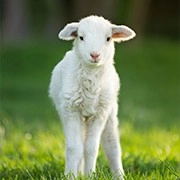Mirror Test Minds

Have you ever seen a dog barking at its reflection or a bird pecking at a window? These amusing moments often make us wonder—do animals realize they are seeing themselves?
One of the most intriguing ways scientists explore this question is through something called the mirror test, which aims to uncover signs of self-awareness in non-human species.
Let's dive into the science behind this test and the amazing results that challenge our understanding of animal intelligence.
What Is the Mirror Test?
The mirror test, developed by psychologist Gordon Gallup Jr. in 1970, is a method used to determine whether an animal can recognize itself in a mirror. The idea is simple: if an animal can understand that its reflection is its own body, it might possess a form of self-awareness.
The typical setup involves placing a visible mark—often a colored dot—on a part of the animal's body it can't see without a mirror, like the forehead or chest. If the animal uses the mirror to investigate or try to remove the mark, it suggests it understands the reflection is of itself—not another animal.
Why Self-Recognition Matters
Self-recognition is considered a sign of advanced cognitive ability. It's often linked to consciousness, empathy, and even the capacity to reflect on one's own mental states—something known as metacognition.
In humans, this ability typically appears between 18 and 24 months of age, when toddlers begin recognizing themselves in mirrors and photographs. Finding this trait in animals raises big questions: Do animals have a sense of self? Can they think about their own thoughts?
Animals That Passed the Mirror Test
While many animals fail the mirror test, several species have shown convincing signs of self-recognition. These include:
• Great apes such as chimpanzees, bonobos, orangutans, and sometimes gorillas. They often touch the mark on their heads or faces after seeing it in a mirror.
• Bottlenose dolphins, which display prolonged interest in mirrors and examine marked parts of their bodies.
• Asian elephants, which have used their trunks to inspect marks on their heads.
• European magpies, one of the few bird species to pass the test. They use their beaks and claws to remove colored stickers from their feathers.
• Cleaner wrasse, a small tropical fish, has sparked debate by reacting to mirrors in a way that some researchers interpret as self-recognition.
These results suggest that self-awareness may have evolved in different groups independently, especially in social or highly intelligent species.
Species That Struggle with Mirrors
Many animals do not pass the mirror test, including dogs, cats, and some monkeys. However, failure doesn't necessarily mean a lack of self-awareness. It might be due to limited interest in visual information, differences in sensory processing, or the animal's natural behavior.
For example, dogs rely heavily on scent rather than sight. When given a "smell test" instead—presenting them with their own scent versus another dog's—they often show signs of recognition. This implies that their self-awareness might be expressed in different ways.
Criticisms of the Mirror Test
Although the mirror test is widely used, it's not without controversy. Some researchers argue that it's biased toward species that use vision as their primary sense. Others point out that the test may overlook cultural or behavioral differences between animals—or even between individuals.
Dr. Frans de Waal, a leading primatologist, has suggested that intelligence and self-awareness are more complex than a simple pass-or-fail mirror challenge. According to him, an animal's refusal to interact with a mirror might not reflect low intelligence, but simply a different cognitive style.
Beyond the Mirror: Alternative Tests
Because of its limitations, scientists are developing new methods to explore self-awareness in animals. These include:
• Smell-based tests, like the "sniff test of self-recognition" in dogs.
• Video playback experiments, where animals view recordings of themselves.
• Delayed self-recognition tests, where animals are shown delayed footage to see if they understand the connection over time.
These tools are helping to paint a more complete picture of how animals perceive themselves.
Implications for Animal Ethics
The idea that some animals might be self-aware has big ethical implications. If a creature can recognize itself, experience emotions, or reflect on its experiences, it may deserve stronger protections.
Research from Dr. Lori Marino, a neuroscientist and expert on animal cognition, suggests that self-aware species likely experience psychological well-being and distress. This highlights the importance of respecting animal welfare in zoos, research facilities, and our daily lives.

Why Self-Awareness Evolves
One theory is that self-awareness evolved as a survival advantage in social species. Being able to reflect on your own actions—or anticipate how others see you—could improve cooperation, social bonding, or conflict resolution.
In animals that live in tight social groups, such as elephants or primates, recognizing themselves and others may help maintain group stability and strengthen relationships.
Looking Ahead: New Questions
As we develop better tools to study animal minds, the lines between humans and other animals grow blurrier. What counts as self-awareness? Do animals reflect on the past or plan for the future? These questions drive new research into animal cognition and open our minds to new possibilities.
Technology like brain imaging and AI-based behavior tracking may soon help answer some of these mysteries.
Conclusion: A Reflection Worth Exploring
The mirror test may seem like a simple game, but it touches on one of life's biggest questions: what does it mean to know yourself? As scientists continue to uncover the secrets of self-awareness in animals, we're reminded that intelligence comes in many forms—and sometimes, it stares back at us through the glass.
Have you ever noticed an animal reacting to its reflection? What did it do? Share your observations—we're always curious to hear how others see this fascinating topic!

 · Animal team
· Animal team